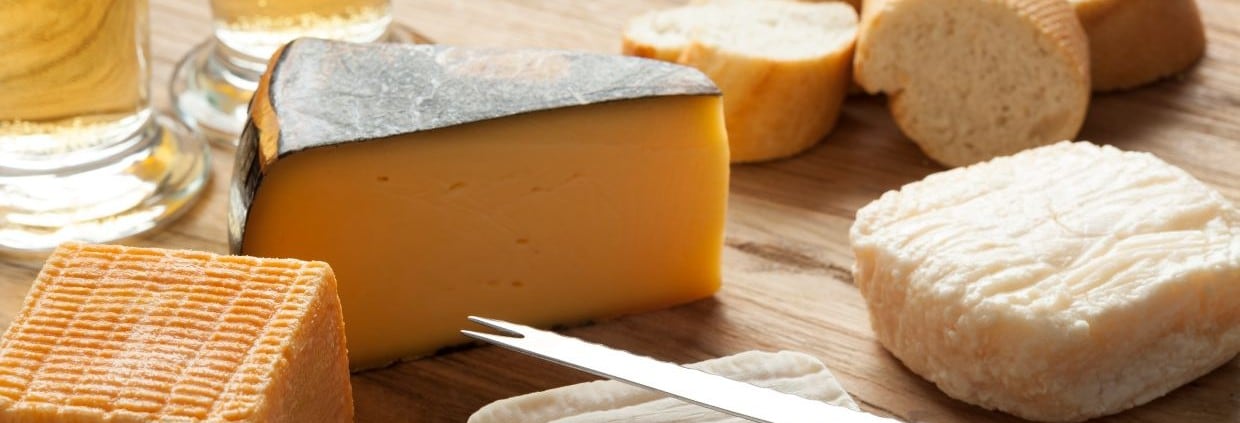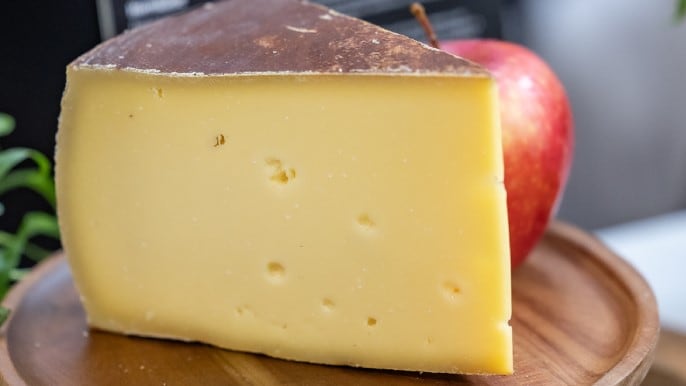The EU produces around 150m tonnes of raw milk per year, with cheese production reaching 10.85m tonnes (an all-time high) in 2024.¹⁻²
The varied landscapes, climates and cultures that underpin cheese-making traditions throughout the EU are important symbols of heritage and place that appeal to today’s inquisitive and discerning consumer.
According to cheese writer and educator Patrick McGuigan, advisor to the ‘More Than Only Food & Drink’ campaign: “EU quality schemes, such as Protected Designation of Origin (PDO) and Protected Geographical Indication (PGI), play an important role, not just in preserving traditions, but also in putting regions on the global food map. In the case of cheese, this is becoming a significant tourism driver.”
A 2025 Italian survey revealed that 32.7% of Italian travelers participated in at least one cheese-related experience in the past three years, with a 7.3% increase compared to 2021.³ Cheese tourism may be a recent phenomenon compared to wine but as a growing sector it has the potential to protect rural communities and their traditions.
McGuigan, who has travelled the globe to meet the world’s top cheesemakers, adds that terroir, as well as changing climate, have an important role in the texture and taste of cheese.
“There are hundreds of fascinating backstories to artisanal cheeses throughout Europe, as farmers and cheesemakers struggled to find methods to make a livelihood in their often-difficult surroundings. Many of these settings are dramatic and scenic, making them ideal for tourists looking to venture off the beaten track,” states McGuigan.
Whilst Normandy and the Italian Dolomites have established cheese routes, other countries are pursuing protected status to preserve and promote their traditions and cultures.
Cheese traditions across cultures
Ġbejna tan-nagħaġ PDO from Malta is the first Maltese food product to be granted PDO status.⁴ The fresh cheese is prepared from sheep’s milk and under the PDO specification, at least 55% of the ewe’s feed must be cultivated locally. The PDO has also reinstated the use of lamb rennet, ensuring the cheese is made exclusively from sheep’s milk and safeguarding Maltese sheep flocks.
“Even with my knowledge of cheese, I was unaware that Malta had a cheese tradition so it’s great to see the country added to the map with this PDO. It also makes me curious about other Maltese cheeses and hopeful that there will be more PGIs and PDOs to follow Ġbejna tan-nagħaġ PDO,” says McGuigan.
The production of Kaffeost PDO (coffee cheese) from Sweden is limited to the northernmost regions of Sweden, and the raw milk must be sourced from the same area. The cheese is often oven-baked, sometimes smoked, and is always served after the small cubes have been heated in hot, boiled coffee – hence the name.
“Artisanal Swedish cheese almost vanished after the Second World War, and many traditions and practices were nearly lost forever. Thankfully, this appears to be changing with Wrångebäcksost PDO, the first Nordic cheese to receive the status, and Kaffeost PDO the most recent accreditation.
“Kaffeost PDO is very distinct in flavour, some is made with reindeer milk, and the way it is served with coffee is very unique to north Sweden. The PDO was supported by a collective of dairies who saw the opportunity of protecting its heritage and sharing this long-held cultural custom with a world that has a growing interest in cheese,” adds McGuigan.
Diversity of cheese production
Geographical indications also demonstrate the diversity of cheese production within more traditional cheese making nations. As is the case with Pérail PGI from France and Queso de Burgos PGI from Spain.
“Pérail PGI, produced in the heart of the Grands Causses of France, has been made for centuries using traditional techniques. Historically, it would have been made from milk leftover from the production of Roquefort PDO and eaten by the farmer’s family at the end of the lactation cycle. It wasn’t until the 1980s that several cheesemakers began making a living from producing Pérail itself. After 40 years, it’s reassuring that a cheese that began as a modest supper now has a protected status.
“Queso de Burgos PGI illustrates that there is much more breadth and depth to Spanish cheese than Queso Manchego PDO. The region of Castile and León, where it is produced, makes a number of protected cheeses and is also known for blending milks from different species.
Mixing stems is from necessity as it’s difficult to milk ewes during winter, thus these lower quantities would be compensated by combining with cow’s milk,” says McGuigan.
The purpose of protected status is to preserve traditions and to showcase the terroirs but the quality and craftsmanship of many protected cheeses also ensures that they have a place among the world’s best. In 2024, dozens of EU cheeses were awarded three stars in the Great Taste Awards, with many more receiving one or two stars.
“There were plenty of famous cheeses within this year’s award winners but also some lesser-known entries such as Paški sir PDO from Croatia, Asiago PDO from Italy and Queso Castellano PGI from Spain. Having so many diverse EU cheeses honoured in the awards shows that it isn’t just the big hitters that deserve attention but that there are many other cheeses waiting to be discovered,” concludes McGuigan.
Find out more about the positive impact of PDOs and PGIs on the EU cheese industry here, or contact morethanfood_UK@agripromotion.eu.
References
- European Commission. Milk and dairy products.
- European Dairy Association. Annual Report 2024/2025
- Italia mon amour. Cheese Tourism: when cheese becomes a trend.
- European Commission. Ġbejna tan-nagħaġ first Maltese food to be registered with a Geographical Indication, with the Protected Designation of Origin label.



